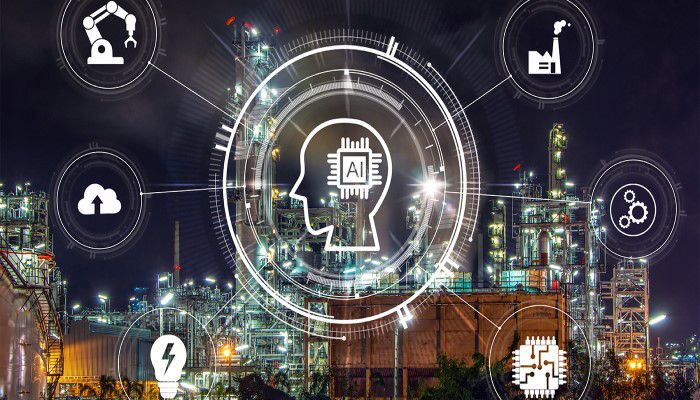Artificial Intelligence (AI) has been rapidly growing over the past few years, revolutionizing many aspects of our lives. It’s no surprise that AI is making its way into more and more industries as time goes on – but what exactly does it mean?
In this article we’ll explore the five main types of artificial intelligence:
- Machine learning
- Natural language processing (NLP)
- Computer vision
- Robotics
- Deep learning
We’ll explain each type in detail so you can get a better understanding of how they’re used to serve others. With this knowledge, you’ll be able to harness the power of AI for your own projects!
Machine Learning
Machine Learning is the practice of using optimization algorithms to discover patterns and make predictions from data. It encompasses a wide range of techniques, including supervised learning, unsupervised learning, semi-supervised learning, reinforcement learning, active learning, transfer learning and deep learning.
By leveraging powerful machine learning models such as neural networks and decision trees, organizations are able to automate tedious tasks that would otherwise take considerable effort and time for humans to accomplish. The majority of modern AI systems utilize some form of machine learning in order to function optimally.
From facial recognition software used by police departments to autonomous vehicles navigating city streets; these technologies rely on large amounts of data which must be analyzed in order to produce accurate results. This can be achieved through supervised and unsupervised methods or even more complex approaches such as reinforcement learning – where an algorithm learns how to complete certain tasks based on rewards provided when it achieves desired outcomes.
By employing sophisticated machine learning techniques such as transfer learning, businesses can leverage existing datasets in order to quickly develop new products without having to start from scratch. Such applications have been instrumental in accelerating the adoption rate of artificial intelligence across industries such as healthcare and finance.
To move forward with this next step into natural language processing (NLP), we need look no further than the progress already made utilizing ML technology.
Natural Language Processing (Nlp)
Machine learning is a powerful tool that has revolutionized the way we think about artificial intelligence. It allows us to create algorithms and models that can recognize patterns, make predictions, and even do basic decision-making tasks without human intervention.
But machine learning alone isn’t enough to enable truly intelligent machines—we need additional technologies such as natural language processing (NLP).
NLP uses deep neural networks to understand text input from humans, allowing AI systems to interpret written or spoken commands in context. This opens up countless possibilities for advanced applications like voice recognition, automated translation services, and more.
In addition, NLP helps with multi modal learning by combining data from multiple sources (text mining) into one unified model for better accuracy. By using both supervised and unsupervised methods of NLP modeling, it’s possible to build sophisticated AI solutions capable of understanding complex concepts and making decisions based on them.
Computer vision takes things a step further than just analyzing text inputs; it enables computers to ‘see’ the world around them through image analysis and object detection techniques. With computer vision technology, AI agents are able to identify objects in real time within their environment, enabling them to interact with the physical world much like humans do.
From autonomous vehicles that can detect obstacles ahead of them on the road, to facial recognition software used in security systems—computer vision plays an increasingly important role in helping machines become smarter every day.

Computer Vision
‘Seeing is believing.’ This adage rings true when it comes to the main types of artificial intelligence, particularly in computer vision.
Computer Vision is a branch of AI that focuses on recognizing patterns from digital images and videos as well as providing meaningful descriptions for them. It has applications in object recognition, facial recognition, image classification, and more.
Here are four ways computer vision can be used:
- Image Recognition – Using algorithms to detect objects within an image or video frame
- Facial Recognition – Identifying faces from digital images or videos
- Automated Visual Inspection – Inspecting products with cameras instead of manual labor
- Motion Detection – Tracking movement over time
Computer vision provides machines with the ability to recognize and process visual data like humans do – but often much quicker than we can. By utilizing pre-trained models and leveraging powerful machine learning techniques such as deep learning, computer vision systems can now outperform human accuracy at various tasks while doing so faster.
The implications of this technology are far reaching – across industries ranging from healthcare to retail. With robotics being the next step in advancing our understanding of AI, it’s clear that computers will continue to understand us better than ever before.
Robotics
Robotics has been a cornerstone of artificial intelligence since its inception. Robotics is the use of computers to control physical devices in order to achieve a goal or perform a task. The applications for robotics are vast and varied, ranging from industrial manufacturing to medical surgery.
While these robots are extremely useful, they also raise important ethical questions about how much automation should be allowed in our society. AI ethics is an increasingly important topic when discussing robotics and other forms of AI-driven technology. Ethical considerations include topics such as safety, privacy, and potential job loss due to automation.
Governments around the world are beginning to realize that regulations need to be put into place to ensure that AI technologies don’t take away too many human rights or freedoms. For instance, some countries have proposed laws that would require companies using AI algorithms to disclose their usage so people can understand what decisions were made based on those algorithms.
As more research and development is done with robotics, it’s clear that deep learning will play an even larger role in the future of this field. Deep learning techniques allow machines to learn complex tasks without relying solely on preprogrammed commands, allowing them to become smarter over time. This could revolutionize the way we think about robots – instead of simply being tools used by humans, they might one day be able to make decisions independently without needing any input from us at all!
As we explore deeper into the possibilities offered by deep learning, we’ll see just how far this technology can take us.
Deep Learning
Deep learning is like a vast ocean of knowledge, and its power to inform our understanding of the world around us cannot be understated.
Deep learning algorithms are one of the most important types of artificial intelligence, allowing automation systems and chatbot design to become increasingly sophisticated.
By deploying deep learning techniques, we can construct powerful models from large amounts of data that allow machines to think and act more intelligently than ever before.
In essence, these AI systems are able to learn how to solve problems without having explicit instructions programmed into them – giving rise to intelligent decision-making capabilities.
For example, deep learning in autonomous vehicles enables them to recognize objects on the road with remarkable accuracy; while facial recognition technology powered by machine learning allows humans to quickly identify people they’re looking for in crowded spaces.
As well as providing huge benefits across numerous industries, this type of advanced artificial intelligence has opened up new opportunities for innovators everywhere.
With creative minds coming together to explore the potential applications of this cutting-edge technology, there’s no telling what kind of groundbreaking inventions could arise in years ahead.
Frequently Asked Questions
What Is The Cost Of Implementing Ai In My Business?
The cost of implementing AI in your business depends largely on the size and scope of your project, as well as the available resources for resource allocation.
When considering the potential cost benefit associated with incorporating AI into your organization, it’s important to take into account both upfront costs such as hardware and software investments, as well as long-term investment returns through improved efficiency or better customer service.
By carefully weighing these factors ahead of time, you can make an informed decision about whether investing in AI is right for your particular business.
How Much Time Is Required To Train An Ai System?
Training an AI system requires a significant investment of time and resources.
Machine learning algorithms must be taught to recognize patterns within large sets of data, while natural language processing is used to teach the system how to comprehend words in context.
Depending on the complexity of the task, training can take anywhere from weeks to months, with ongoing maintenance and upgrades needed to keep the system up-to-date.
With careful planning and dedication however, businesses can create powerful solutions that will benefit their customers for years to come.
How Can Ai Be Used To Improve Customer Experience?
AI technology has revolutionized the way businesses interact with their customers, allowing companies to employ personalization strategies and data collection in order to enhance customer experience.
AI can provide a personalized shopping experience that improves convenience for customers while also providing insights into what they want.
By utilizing AI-driven solutions, such as chatbots or dynamic product recommendations, businesses can create an engaging environment that encourages customer engagement and loyalty.
With AI, companies are able to build deeper relationships with their customers by offering tailored services that meet their needs and preferences more effectively than ever before.
What Are The Security And Privacy Implications Of Ai Technology?
AI technology has the potential to revolutionise how data is used and shared, but it also raises important questions about security and privacy.
As AI-driven algorithms become increasingly sophisticated and complex, they can potentially be exploited in ways that could put our personal data at risk.
To ensure user safety, organizations must invest resources into algorithm auditing and data sharing protocols that protect users’ privacy while still allowing for the benefits of cutting edge AI tech.
How Difficult Is It To Maintain An Ai System?
Maintaining an AI system can be a difficult task. With the complexity of data protection, AI ethics, and other nuances that come along with it, managing such systems requires extraordinary effort and dedication.
However, when done correctly, it can yield incredible results in terms of efficiency and accuracy for any organization. By taking into account all factors including costs associated with training, resource utilization and maintenance of AI systems, organizations are able to produce better outcomes than ever before.
Conclusion
AI technology is like a puzzle, with each piece unlocking the potential for more efficient and cost-effective business practices.
With careful consideration to security and privacy measures, AI systems can be incorporated into any business model to increase productivity and customer satisfaction.
As time progresses, AI will become increasingly prominent in our lives, allowing us to access information quickly and easily.
It’s up to us as individuals and businesses to embrace this ever-evolving technology.
Like building an intricate clockwork machine, we must carefully assemble the pieces of Artificial Intelligence one by one until it becomes an integral part of our day-to-day operations.
By doing so, we’ll unlock a world of possibilities that could revolutionize how we work and live.




